Intel’s Core Ultra 200V-series processors, code-named Lunar Lake, offer advanced power management, efficiency, and an integrated Arc GPU with Xe2 architecture and XMX AI engines. The Lenovo Aura notebook features a 14-inch OLED display, weighs 980g, with battery life ranging from 8–24 hours. The processor supports AAA gaming, AI-accelerated apps, and professional video editing, with notable performance and power efficiency gains. Thunderbolt 4 and USB4 compliance enable seamless connectivity.
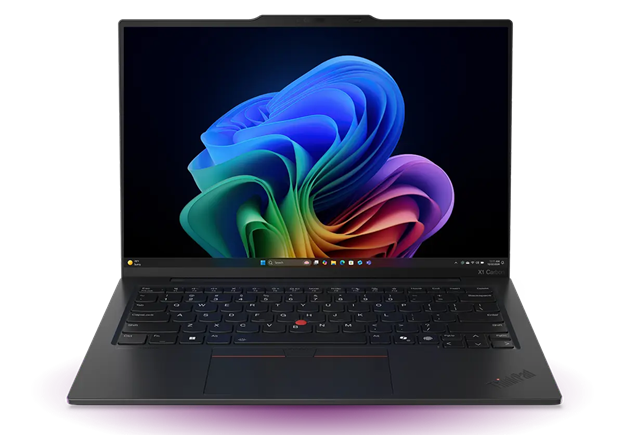
What do we think? We have entered the era of the AI PC. Not well-defined or understood, it will nonetheless be the main attraction in Q4 and all of 2025. It’s time to refresh the Covid surge, which will happen during 2025. We expect the AI PC to be adopted by DCC users, who will be market influencers: game developers, artists, photographers, and graphics artists. The second wave of buyers will be in enterprises and then SMBs. Consumers will be the late adopters, except those who want bragging rights or want to futureproof their investment. Battery life is the big selling point, as AI apps have not yet caught the user’s attention (except for DCC users). The Lunar Lake processor makes notebooks extremely attractive if you are ready to update your machine, regardless of the AI aspect—that’s a bonus.
The Intel Core Ultra power-efficient, high-performance notebook processor
PCs, especially notebooks, have gotten so much better these days, and it’s fantastic. The out-of-the-box experience with the two machines we’ll review here was delightful. Microsoft gets a lot of the credit for that. In both cases, the Intel Lunar Lake-based Lenovo Aura and the Qualcomm-based Dell XPS were ready to go. Opening the lid brought up Windows, and we were ready to proceed. With a bit of registration and, bingo, we were in our apps, had our files on the Internet, and were ready to work in under 30 minutes.
And work we could, for a very long time, with no power cords attached.
Lunar Lake
The Intel Core Ultra 288V 3nm series processors (formerly code-named Lunar Lake) represent the second disaggregated SoC design with advanced Foveros 3D packaging (stacking dies on top of each other and next to each other) for consumer PCs from Intel. There are three main versions, which has been Intel’s fashion now for some time: an i5, i7, and an i9. The unit we got has an Ultra 9 288V 3.30 GHz with a 12MB L3 cache. It came with 32GB of LPDDR5X running at 8,533 MHz and is an AI PC that can deliver up to 45 TOPS.
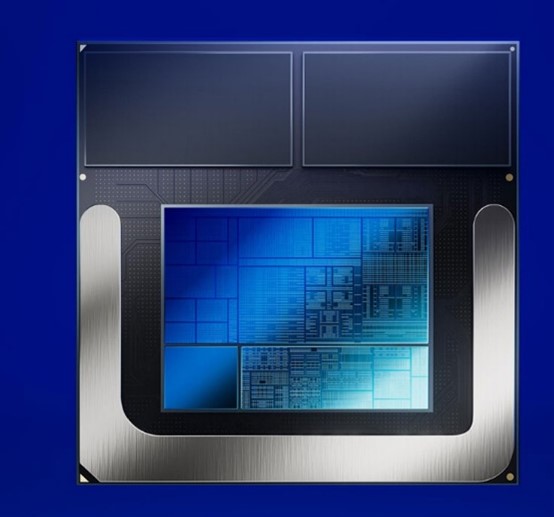
Lunar Lake utilizes the BGA2833 socket and introduces architectural changes over previous generations. The new Lion Cove P-cores replace the former Redwood cores and offer 14% IPC improvement, while the new Skymont cores have replaced the Crestwood E-cores. Intel says the Skymont cores offer much-improved power efficiency, 68%; they eliminate the need for the additional two Low Power Island CPU cores that were present in the Meteor Lake design. The Skymont cores run up to 3.7 GHz, and the Lion Cove gets up to 5.1 GHz. This change in core architecture reflects Intel’s focus on enhancing power efficiency and performance in its latest processor designs.
This is the finest Intel consumer/commercial processor ever built, with next-gen power management and efficiency, an integrated Arc GPU with the new Xe2 architecture and XMX AI engines, and a new NPU.
The Lenovo Aura notebook has a beautiful OLED, HDR, 14-inch, 2880×1800 monitor. Weighing a scant 980g (2.16 pounds), the notebook is specified to run for a day. What’s a day? Well, somewhere between 8 and 24 hours. There is no official specification for battery life; it’s just too hard to quantify (what apps, activity, power mode settings, etc.). However, when Intel announced the chip was in production a few weeks ago, 24 hours was mentioned a few times. Qualcomm has said it would (could) get 19 hours. If you actually used your PC 6 or maybe even 8 hours a day, that would be 3 (Qcom) to 4 (Intel) hours.
The iGPU
The Arc 140V or 140V iGPU runs at 2.05 GHz and promises notable performance, power efficiency gains, and the ability to run AAA games and AI-accelerated applications. Intel says the Arc 140V can hit up to 67 TOPS. The Xe2 architecture facilitates substantially to this. Intel says performance improvements and up to 2 per watt enhancements make it suitable for various applications. (That is based on a comparison to the Core Ultra Series 1, which also had Intel Arc GPUs but was based on prior-gen architecture.)
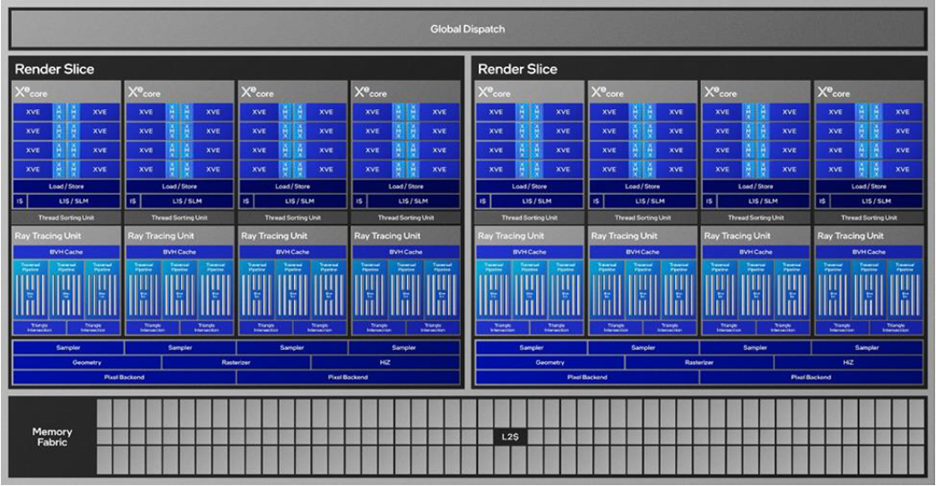
The iGPU Arc has two render slices, each with four Xe-cores. It is DirectX 12 Ultimate-compatible and offers hardware ray tracing and mesh shading. Each second-generation Xe-core incorporates eight Xe vector engines, repartitioned to be compatible with SIMD16. Each Xe vector engine is paired with an Xe matrix extension AI engine, which Intel says can deliver FP16 2048 ops/clock and int8 4096 ops/clock. This configuration provides AI acceleration, enhancing Intel XeSS AI game upscaling performance.
Real-time ray tracing requires rapid computations of ray intersections to create realistic lighting and reflections. Intel’s second-generation ray-tracing unit addresses that need with three traversal pipelines and two ray-triangle intersection units. Each RTU performs 18 box intersection tests per clock cycle, facilitating fast and precise computations. This specialized unit accelerates tasks such as ray tracing, enabling more realistic graphics and reflections in gaming and multimedia applications.
Display
The display engine can drive up to 8K60 HDR using HDMI 2.1 or DisplayPort 2.1, or up to three monitors at 4K60 HDR. Additionally, Intel updated the display engine with the more advanced and power-efficient Embedded DisplayPort (eDP) 1.5. To increase battery life, Selective Update combined with Early Transport offered by eDP 1.5 allows the display engine to send the updated part of the frame without waiting for the correct scan line, reducing overall display power.
Media processing
As might be expected, the processor has a media engine that Intel thinks can cater to the demands of professional video creators and indie filmmakers. It has encoding and decoding capabilities for various codecs, including HEVC 4:2:2, commonly used in professional-grade cameras and AV1. Additionally, it’s compatible with VVC decoding, a recently introduced codec. It can handle demanding video workloads, such as 8K 10-bit HDR 60 fps, and playback, thus making it suitable for professionals and filmmakers.
Thunderbolt technology
Intel co-developed Thunderbolt with Apple, and the new processor is compatible with the latest version, Thunderbolt 4. It is also USB4-, PCIe-, DisplayPort 2.1-compliant, and compatible with Thunderbolt 3/4/5 products.
Thunderbolt 4 offers an easy way to connect a PC to displays, accessories, and power, and with Thunderbolt Share, connect to a second PC.
Thunderbolt Share takes advantage of the performance of Thunderbolt’s bandwidth and low latency for PC-to-PC screen sharing, which makes it easy to drag and drop files, folder synchronization, and fast PC data migration from an old PC to a new PC.
Benchmarks
We ran a series of benchmarks—on battery and then a couple with a power supply plugged in—to see if there was any noticeable or important difference.
The characteristics of the two AI PCs are listed in Table 1.
| Lenovo Aura Yoga Slim 7 15ILL9 | XPX 13 – Snapdragon | |
| CPU | Ultra 9 288V 3.30 GHz – 8 logical processors | Snapdragon X Elite X1E80100 3.00 GHz 12 cores |
| CPU Clock | 3.30 GHz | 3.41 GHz |
| RAM | 32GB | 32GB |
| Memory Speed | 8533 MHz | 8448 MHz |
| GPU | Arc 140V | Adreno X1-85 |
| GPU Memory | 16GB | NA |
| OS | Win 11 Pro | Win 11 Pro |
| Display Size | 15.4 | 13.4 |
| Screen Resolution | 2880´1800 | 2880´1800 |
| Disk | 953.87GB, Micron MTFDKCD1T0TGE-1BK1AABLA, NVMe | 1024 GB NVMe |
| GPU Driver | 32.0.101.6044 |
Table 1. AI PC system specifications.
Adobe has added many helpful AI features to its suite of products. Adobe Premiere Pro has incorporated many great AI features to accelerate video editing tasks. Two such features are Transcribe & Caption and Scene Edit Detection.
Primate Labs Geekbench
Geekbench AI is a cross-platform AI benchmark that uses real-world machine learning tasks to evaluate AI workload performance. Geekbench AI measures the CPU, GPU, and NPU to determine if a device can run machine learning applications. Geekbench AI breaks down AI performance across the hardware stack and allows the selection of the GPU, CPU, or a device’s dedicated NPU for testing. You can also choose from available AI frameworks on your device, like Core ML or QNN. Developers can determine the best combination of frameworks and models for particular workloads, and consumers can easily quantify the impact of dedicated AI hardware.
Unfortunately, the Qualcomm-based Dell XPS couldn’t run Geekbench GPU tests, but it did run the CPU test ONNX. And obviously, it wouldn’t run the OpenVINO (Intel) tests.
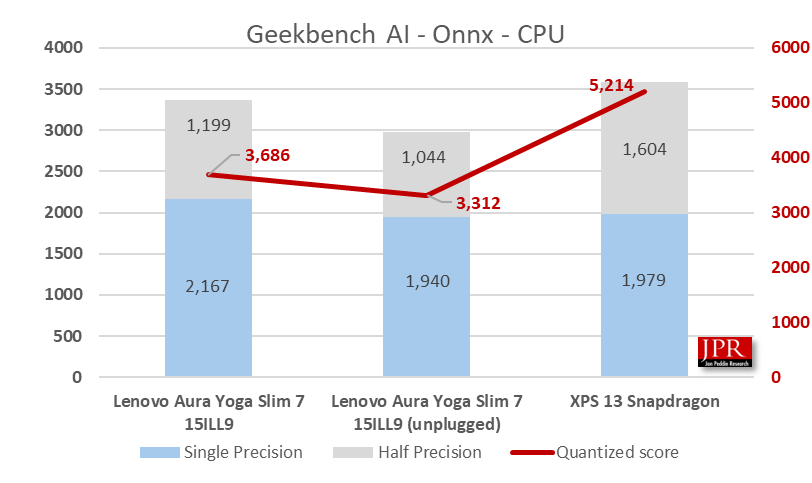
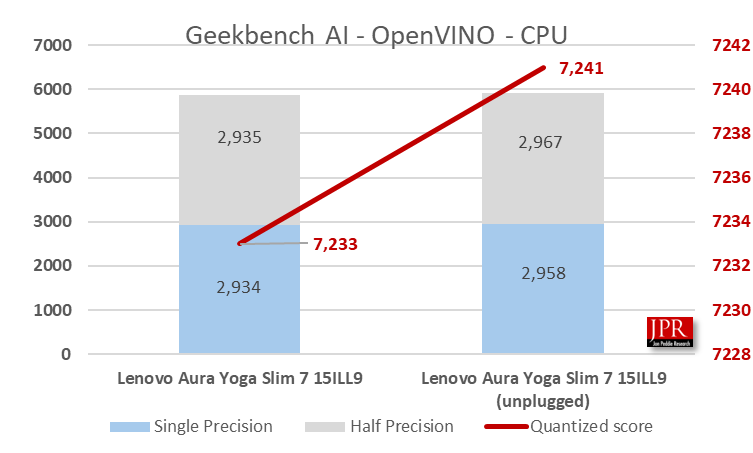
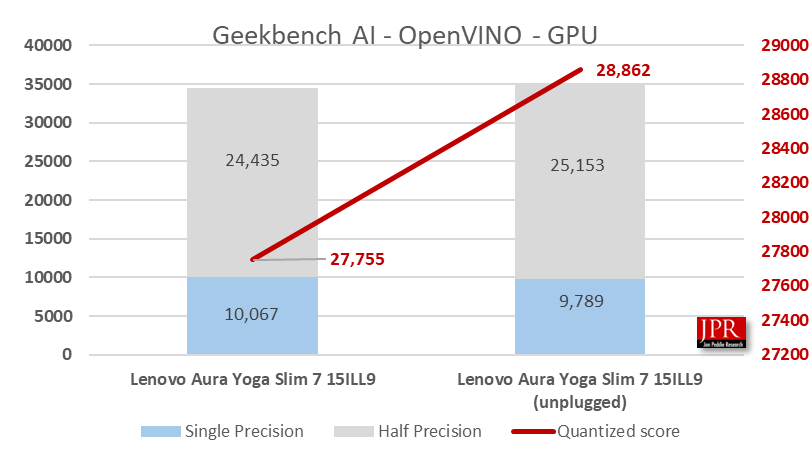
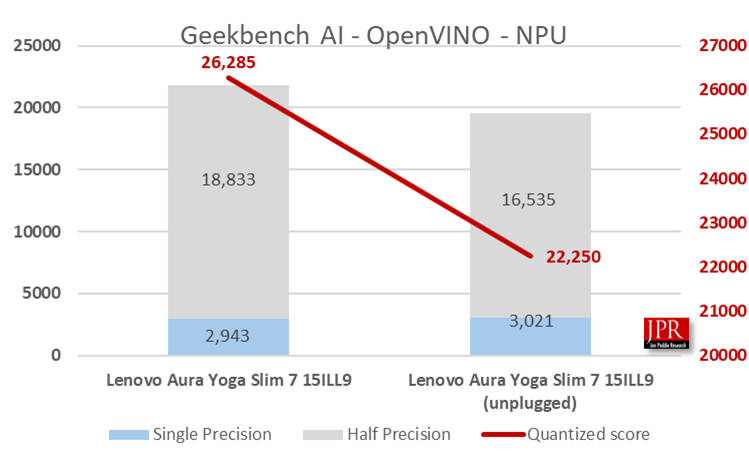
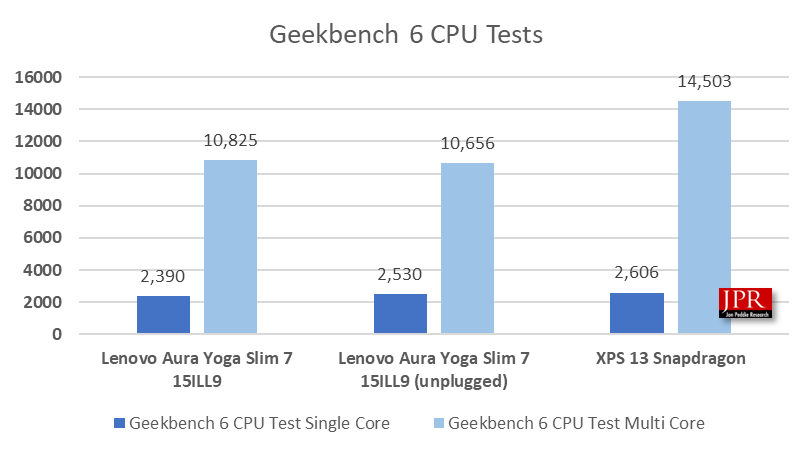
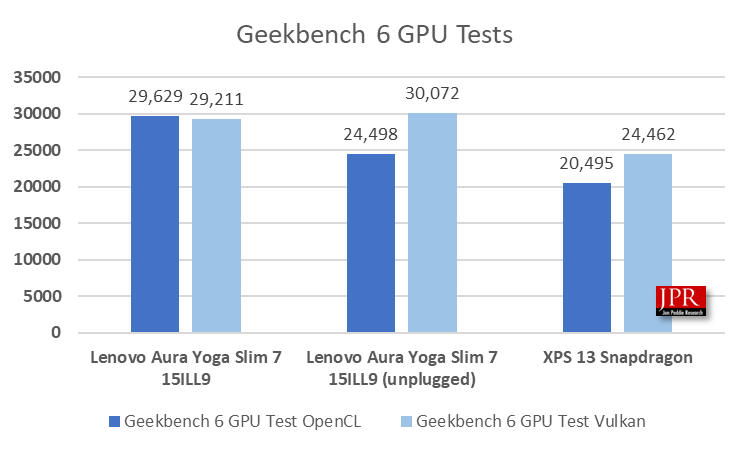
Geekbench, initially designed for Mac OS X and Windows, has evolved into a cross-platform benchmark, now supporting macOS, Windows, Linux, Android, and iOS devices.
UL Procyon
UL Procyon is an AI Computer Vision Benchmark that tests everyday machine vision tasks using popular state-of-the-art neural networks. They measure AI accelerator performance by comparing it with the same operations run on the CPU or GPU. It gives insights into how AI inference engines perform on a Windows PC or Apple Mac, which can help decide which engines to support to achieve the best performance. The benchmark features several AI inference engines from different vendors, with benchmark scores reflecting the performance of on-device inferencing operations. These tests give a general idea of a device’s capabilities. Unfortunately, the GPU and NPU tests would not run on the Dell Qualcomm system.
The benchmark contains two image-generationtests built with different versions of the Stable Diffusion models to cover a range of discrete-GPU hardware. It features a heavy AI inference workload.
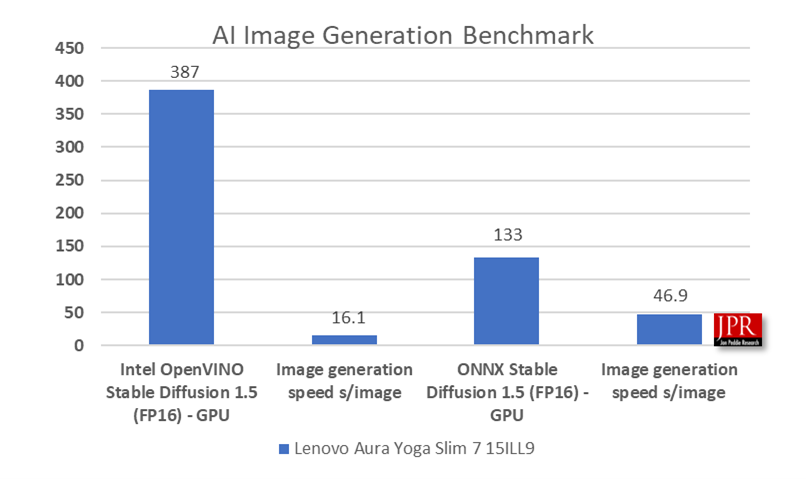
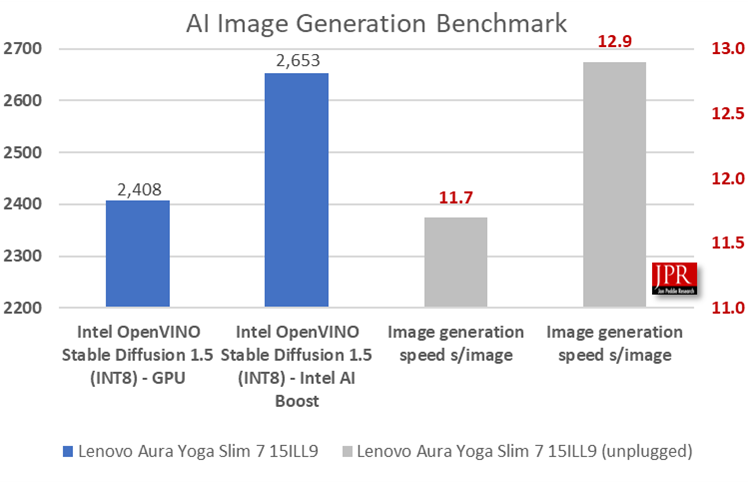
Common machine vision tasks are in the benchmark and executed using various popular networks. AI accelerator performance benefits are measured by comparing the same operations run on the CPU or GPU. Tests are run for Intel’s OpenVINO and for Windows.
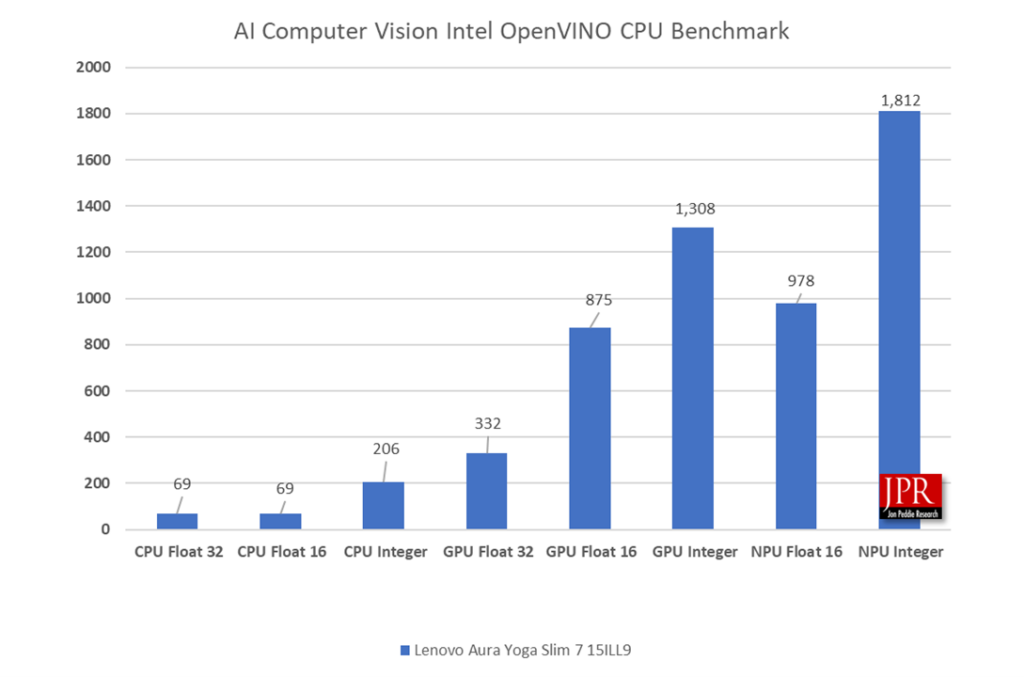
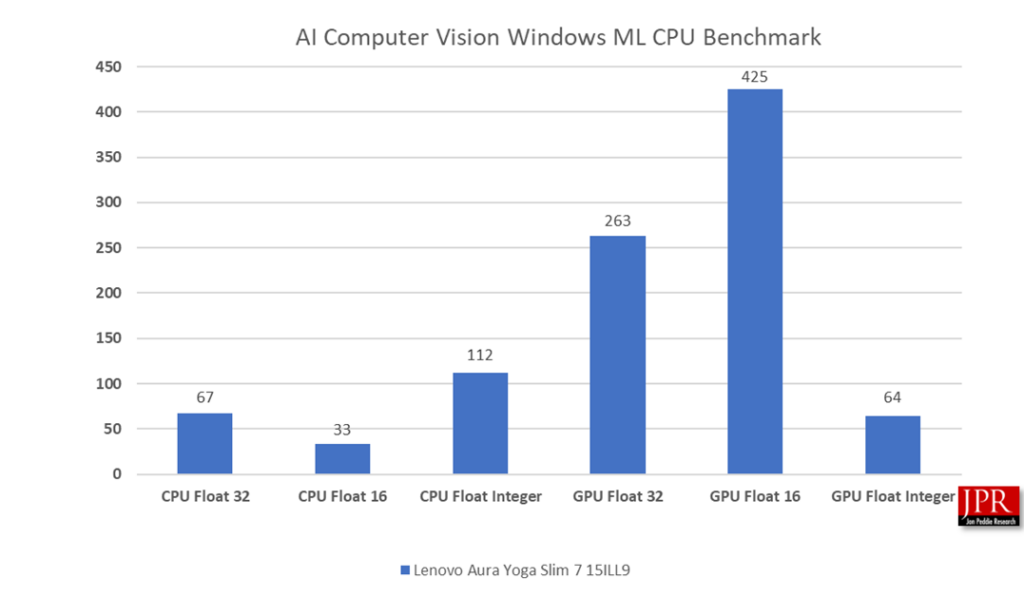
Procyon is a new benchmark suite from UL built for enterprise IT managers, retailers, reviewers, and procurement.
Maxon Cinebench
Cinebench, which is based on Cinema 4D, measures a computer’s CPU and GPU performance by rendering highly detailed 3D scenes. It gives users a metric to see how their device will handle intense processing loads.
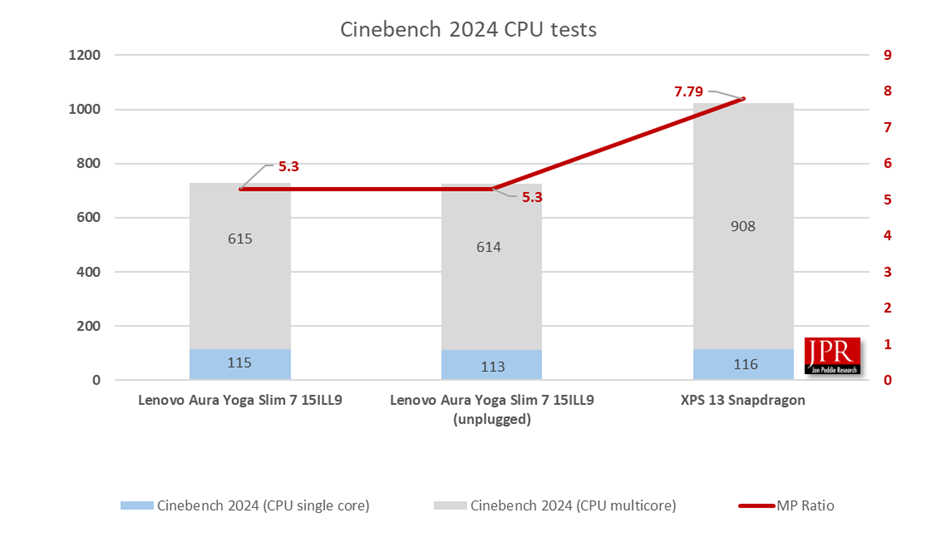
Cinebench is a real-world benchmark that evaluates a computer’s hardware capabilities.
UL PCMark
PCMark 10 is a general benchmark test that covers most modern office tasks. The Main test gives a Total score and three other scores: Essentials, Productivity, and Digital Content Creation. The Digital Content Creation test is particularly interesting to us, as it runs a variety of real-world graphics processing tasks through the system. However, it could not run on the Qualcomm processor.
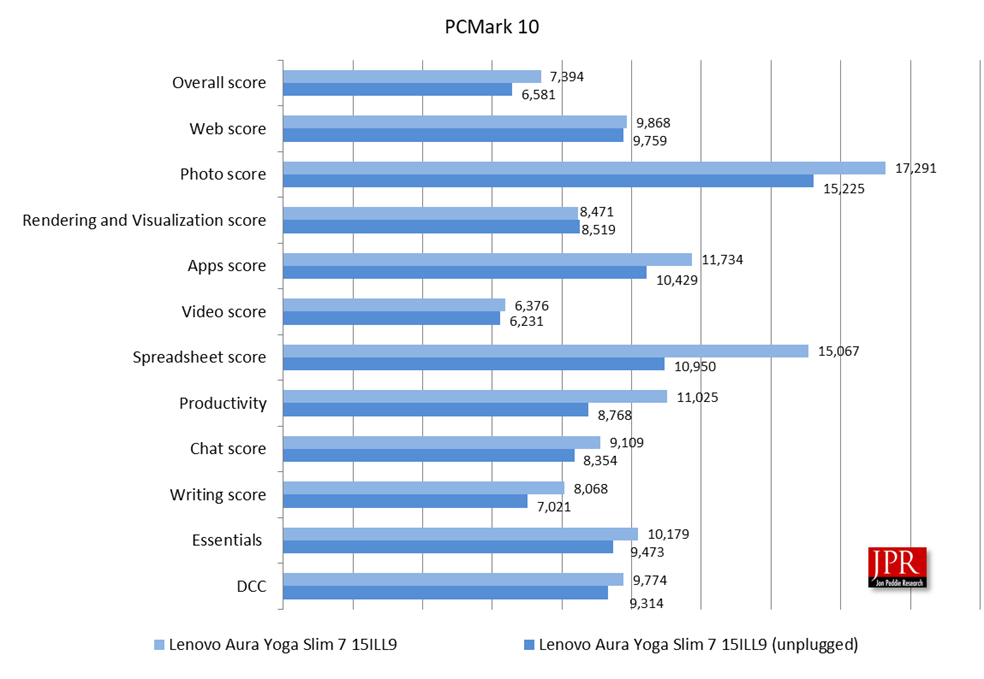
PCMark 10 provides an extensive test suite covering various tasks commonly performed in contemporary work settings. It was handy in showing the difference between running the notebook with power applied and on the battery. The average of all tests showed a 12% improvement in performance when running on power.
Bapco CrossMark
Bapco’s CrossMark is an easy-to-run native cross-platform benchmark that measures the overall system performance and system responsiveness using models of real-world applications. CrossMark supports devices running Windows, Android, Linux, ChromeOS, iOS, and macOS platforms.
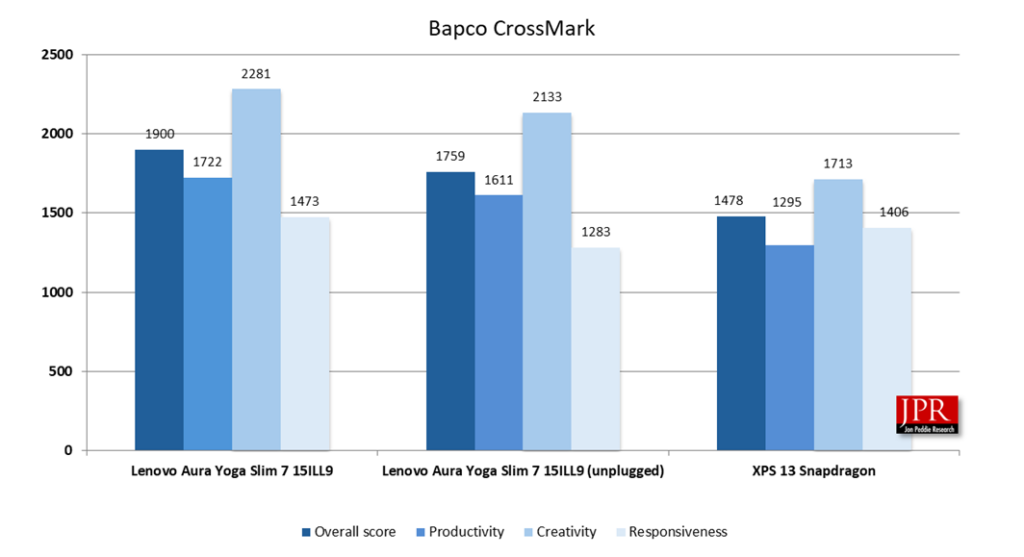
Bapco is an acronym for Business Applications Performance Corporation.
UL 3DMark
3DMark is a benchmarking suite that provides several tests for CPU and GPU, and specific GPU features such as Intel XeSS, DLSS, DirectX, etc. 3DMark Nomad and 3DMark Solar Bay are the latest benchmarks for assessing graphics and ray-tracing performance in thin and light PCs. The Solar Bay stress test shows performance changes over extended gaming sessions. This benchmark is a successor to 3DMark Time Spy and is a demanding non-ray-tracing benchmark. The benchmark is compatible with DirectX 12, Vulkan, and Metal APIs, making it cross-platform.
Steel Nomad Light simulates PC game performance without ray tracing, succeeding 3DMark Time Spy. It runs at 1440p with volumetric skies, procedural grass, and reduced graphical techniques. Set at night with a flooded desert basin, it’s suitable for lightweight systems. It showcases benchmarking visuals with HDR, while maintaining impressive graphics.
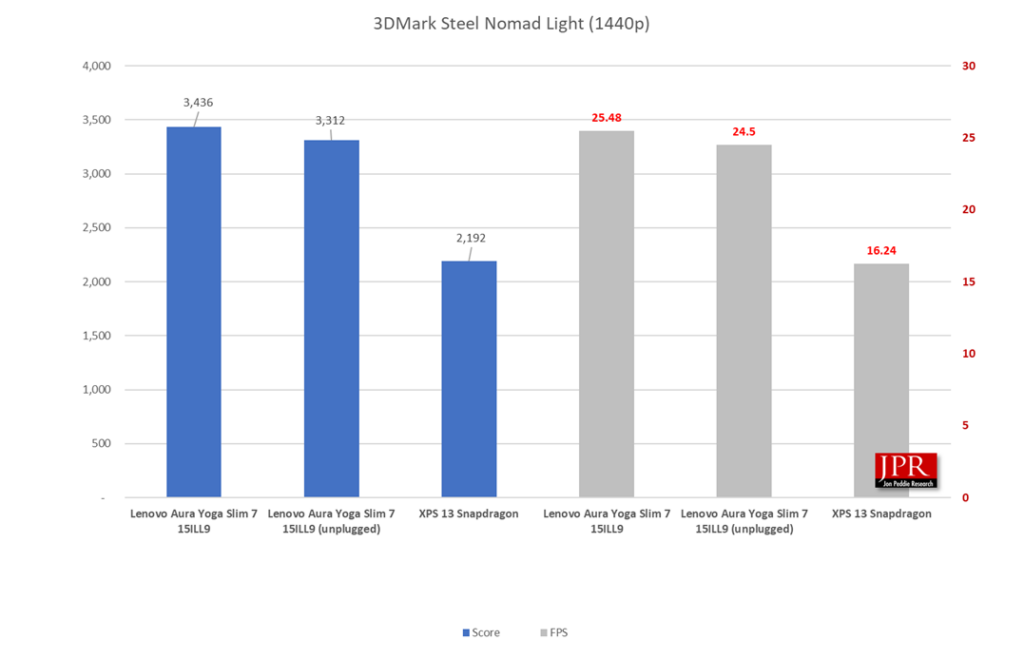
3DMark Solar Bay measures ray-tracing gaming performance on iOS, Android, and Windows devices. It uses Vulkan 1.1 and Metal APIs to assess notebooks, phones, and tablets. Results are comparable across platforms, with workload increasing in three stages to test varying ray-tracing demands.
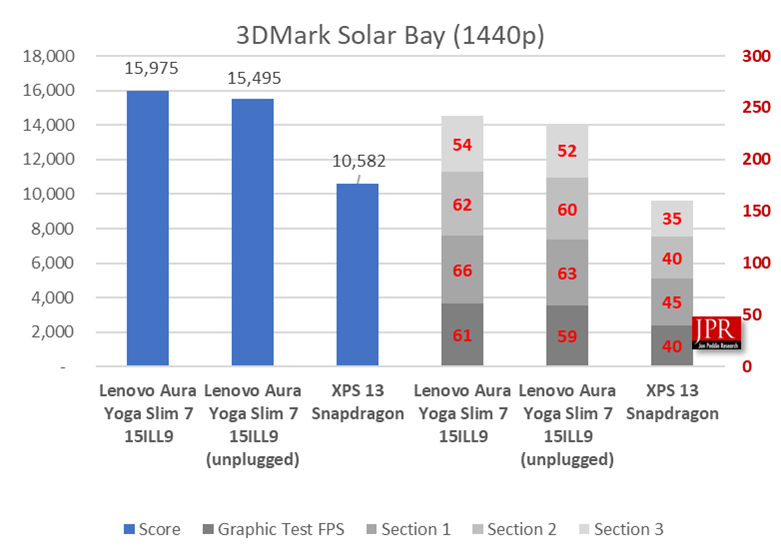
Wild Life Extreme benchmarks GPU performance on Windows notebooks, always-connected PCs, Macs with M1 chips, and next-gen smartphones and tablets. It features new effects, enhanced geometry, and more particles, making it three times more demanding than the Wild Life benchmark for graphics testing.
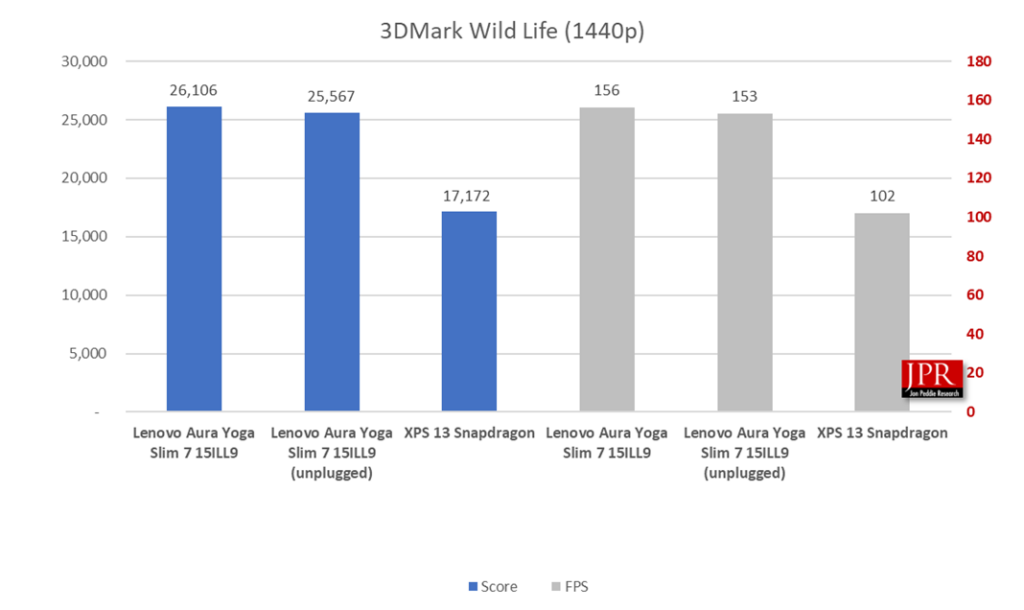
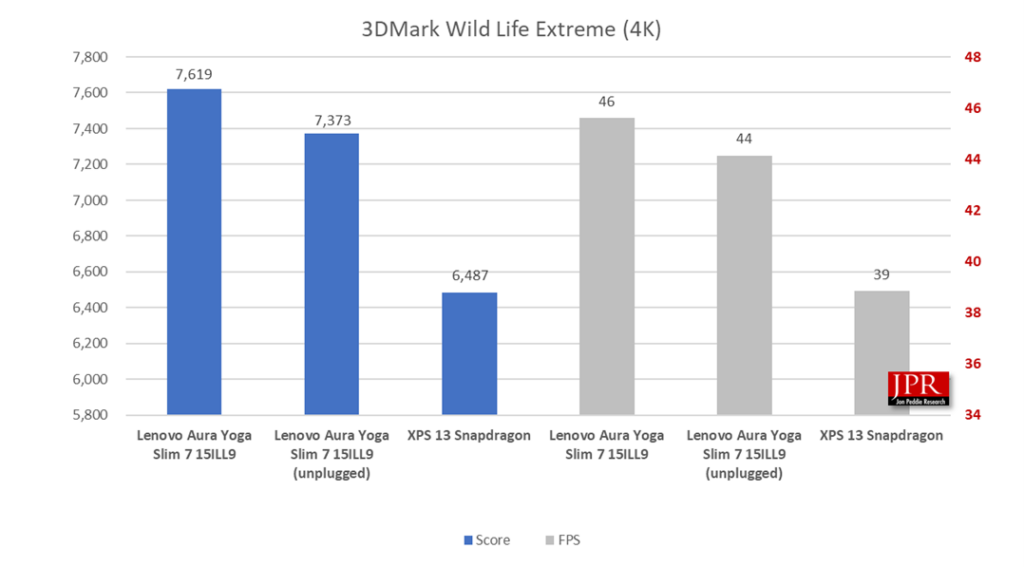
Night Raid is a DirectX 12 benchmark for mobile devices with integrated graphics and low-power Windows 10/11 on Arm platforms. It tests and compares laptops, notebooks, tablets, and always-connected PCs, which are ideal for systems unable to run demanding benchmarks like Time Spy.
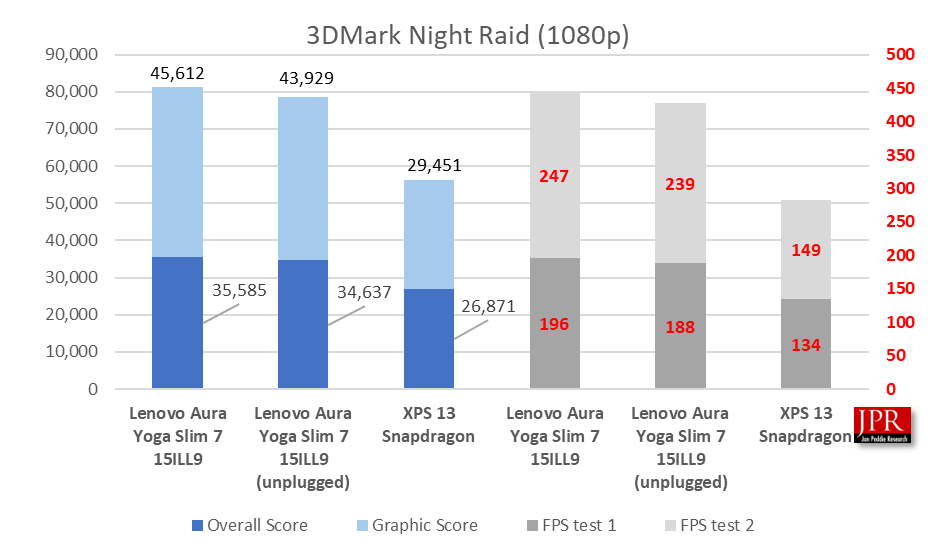
3DMark is a computer benchmarking tool created and developed by UL (formerly Futuremark), to determine the performance of a computer’s 3D graphics rendering
XeSS is an Intel-developed AI ray-tracing algorithm similar to Nvidia’s DLSS, and it is quite effective, as shown in the charts in Figure 15.
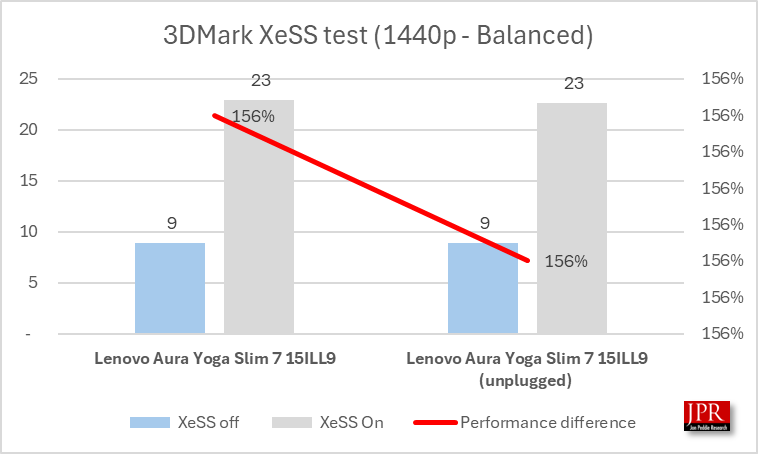
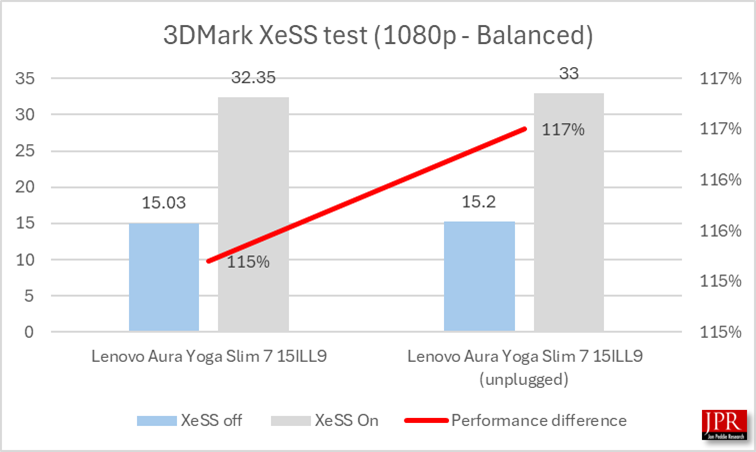
A higher resolution provides a greater performance gain, which seems counterintuitive. However, it is logical because the XeSS, like DLSS, drops the resolution to 1080p for the ray-tracing operation and then scales it up to the display resolution.
The3DMark CPU Profile introduces a new approach to CPU benchmarking. Instead of producing a single number, it shows how CPU performance scales with the number of cores and threads used. The CPU Profile has six tests that use 1, 2, 4, 8, 16, or the maximum number of available threads.

These tests help benchmark and compare CPU performance for gaming, overclocking, and other scenarios.
Games
In addition to synthetic benchmarks, we tested several popular games on the tablets. CPUs with an iGPU or an SoC with an iGPU are expected to do particularly well when running a graphics-rich, scene-changing game like a first-person shooter or adventure game. Qualcomm finds it particularly challenging to manage DirectX 11 or 12 games. Nonetheless, Qualcomm showed well and surprised us that it could run Cyberpunk 2077 at all.
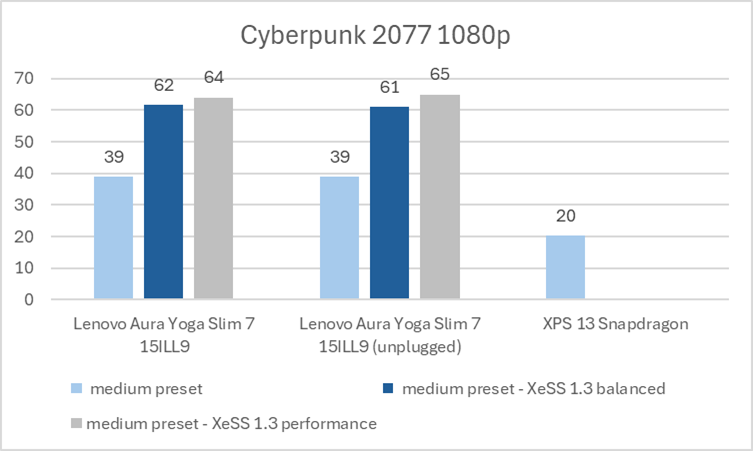
Equally surprising was how well the Lenovo Aura ran on battery or main power.
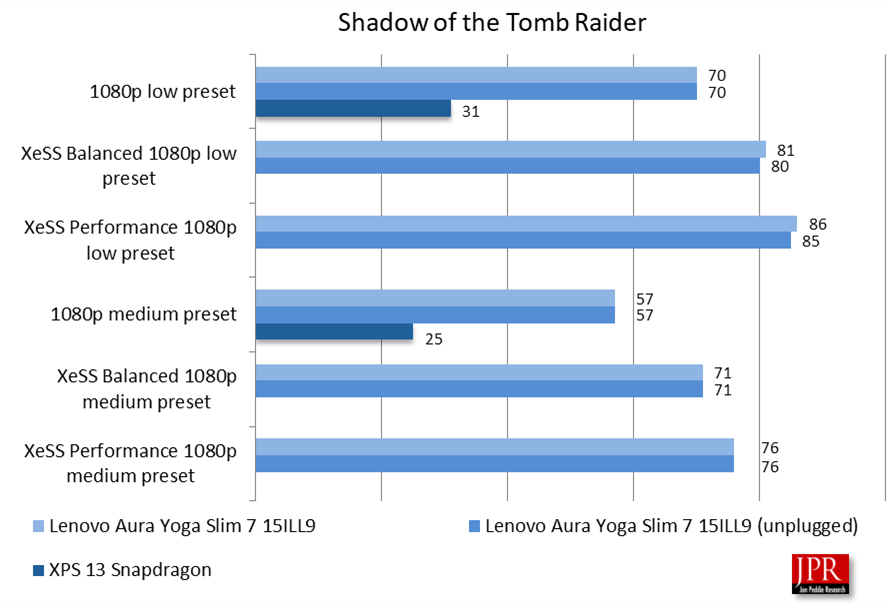
The Intel-based Lenovo Aura has proven to be a high-performance machine in many categories and is as good as it gets for notebook gaming.
Battery performance
Along with the UL Procyon AI benchmarks, we used the Procyon one-hour battery consumption benchmark to assess battery performance. The one-hour battery consumption benchmark calculates both productivity score and a battery usage percentage.
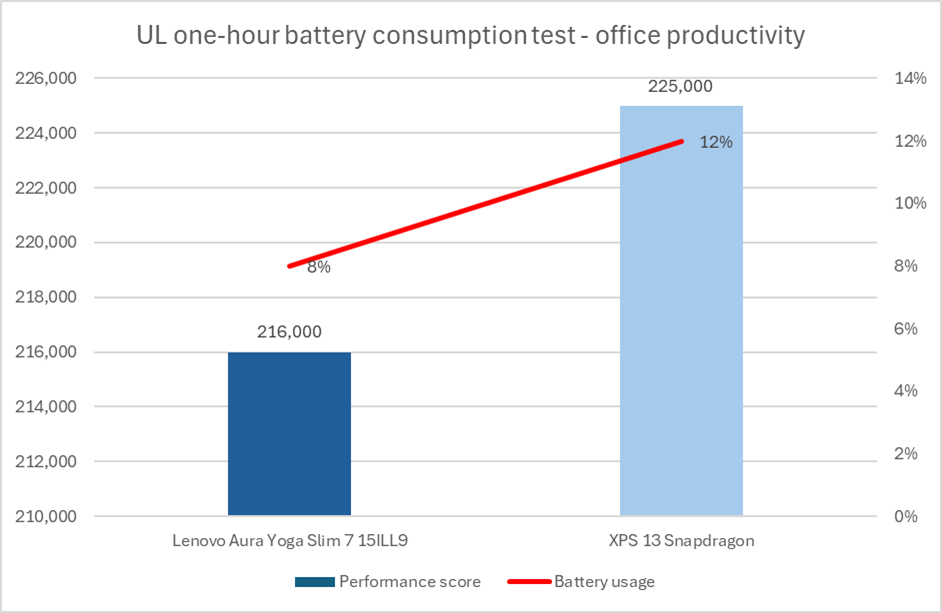
The Dell XPS 13 scores well in productivity tests thanks to the Qualcomm Snapdragon X CPU; however, the Lenovo Aura used 33% less battery life over the one-hour test.
Qualcomm withdraws from the PC development kit business
Qualcomm first showcased Arm-based Windows machines at Computex 2018, with production units from Asus, HP, and Lenovo displayed later that year. These devices were designed for long battery life and everyday Windows use. After a quiet period due to Covid, Microsoft announced Qualcomm-powered notebooks for Copilot+ at Microsoft Build 2024, featuring Snapdragon X processors for advanced AI capabilities.
Recently, Qualcomm’s customers have launched over 30 Snapdragon X-series-powered notebook PCs, but it has since paused production of its developer kit due to failing to meet standards. The company remains committed to working with developers and supporting Windows on Snapdragon.